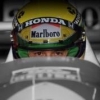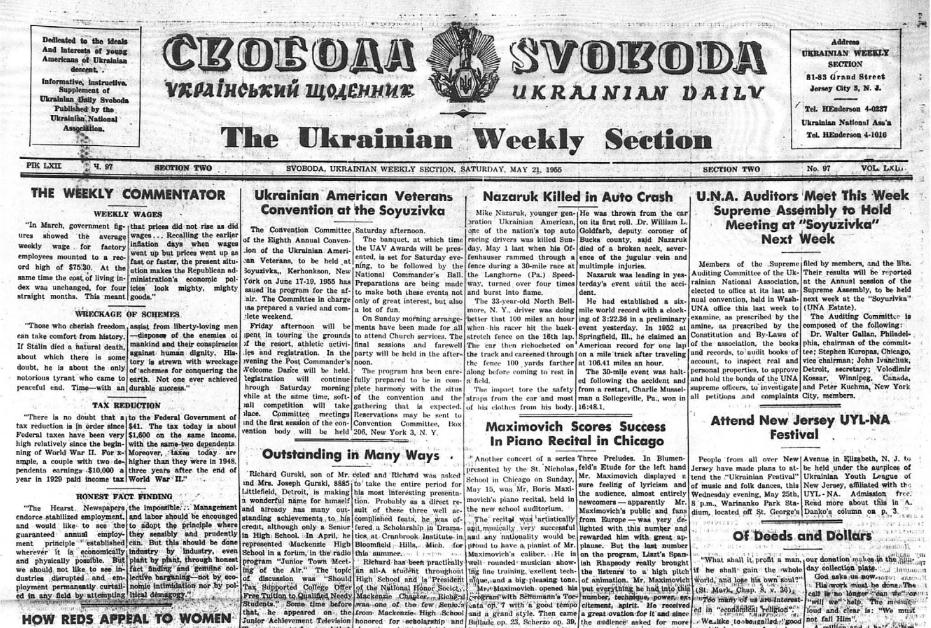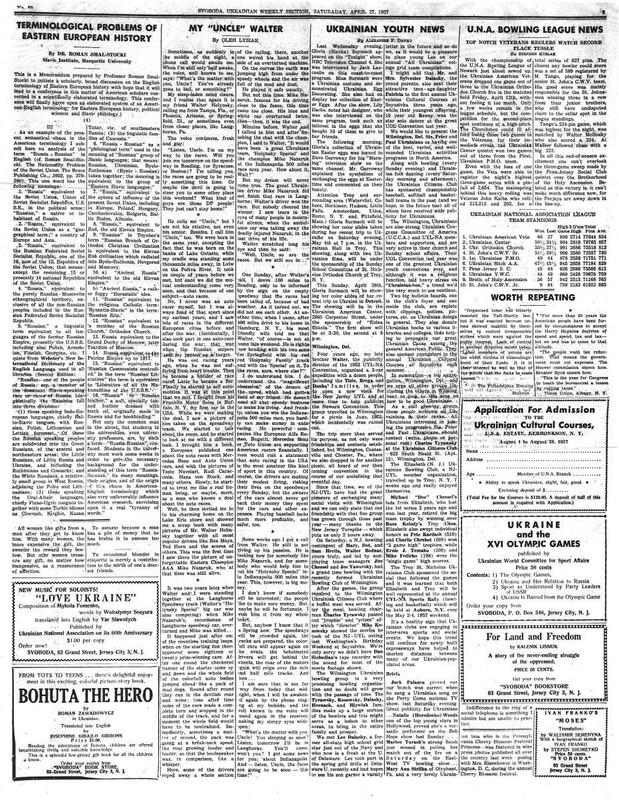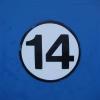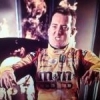Hello friends!
Today, when the world commemorates the 20th anniversary of Ayrton Senna's tragic death, I'd like to remember not only him. The other man is Mike Nazaruk, who was of Ukrainian descent (same as Fittipaldi family) and was killed on this very day, May 1, 1955: 39 years before Ayrton and 59 years ago from the day of today.
The similarity between Nazaruk and Senna not only with the date of their death, but also in the character they were. They both have been remembered for their totally fearless driving style. Also, Lee Elkins, the owner of the McNamara cars, always considered Mike Nazaruk the best driver he ever had drive for him. Same as each and every teamchef would say of Ayrton... And may we say they both were the drivers from God? Afterall, they lived very bright, short life and died almost after they had passed the age of Jesus.
For the details about Mike Nazaruk I prefer to quote Michael Ferner with his great article on him:
Mike Nazaruk - "Only" a Midget winner at Altamont, but I'd be truly mad to let this opportunity slip by without elaborating upon one of the truly iconic figures of US autoracing - "Iron Mike" - Hollywood! Here's a story waiting for you!!
Nazaruk! Maverick, or Maniac? "Merely" Desperate, or even Destitute? Driving, or Driven? Chicken or Egg - was Nazaruk made for Racing, or Racing made for Nazaruk? - Of Ukrainian descent, Mike had seen hell during World War Two: Guadalcanal, Bougainville, Guam, Iwo Jima. When he returned to the US, he was barely twenty-four, and the prototype of a new generation of racing drivers: with that sort of experience at that age, his appetite for adrenalin was boundless, insatiable - if the war couldn't kill him, what in heaven's name could? He was frighteningly fearless, simply FEARLESS.
Originally from upstate New York, he moved to Long Island to find work with Grumman Aircraft, and settled in North Bellmore, near East Meadow and Hempstead. What he also found there within walking distance was Freeport Stadium, a busy one-fifth-of-a-mile oval where the Midgets of the American Racing Drivers Club filled the stands on a regular basis. ARDC was Bill Schindler's club, the charismatic New Yorker who'd lost his left leg in a Big Car crash on Long Island in 1936, and subsequently moved there to become a legend in Midget racing circles. By 1948, Nazaruk was racing alongside Schindler in the team of another Midget legend, Mike Caruso, and the two of them were battling other stars, such as Ted Tappett, Georgie Rice and Steve McGrath, for owners like Frank Curtis, Bill Cheesman or Eddie Bourgnon. It was the Golden Age of Midget Racing, and Freeport Stadium was the hub of the Midget world.
By 1949, the so-called "Midget craze" was dying, and drivers as well as owners began looking for another way to make a living. Schindler returned to his first love, racing Big Cars under AAA sanction, and was instantly successful at that. Nazaruk followed in "Bronco Bill's" footsteps as the 1949 ARDC Champion, and would have loved to continue the route to AAA (and Indianapolis!), but with a surplus of Midget chauffeurs on the lookout for Big Car rides, he was having a hard time attracting attention. Luckily for him, his team boss Mike Caruso was also fancying the leap, and got one of his Midgets "stretched" into a Sprint Car, complete with a supercharged Midget engine! The car was a little bit late in getting ready, but when it was there was no stopping "Iron Mike" and his little hand grenade: in the first six starts, they collected three wins, two seconds and one third place finish, besides two fast times in qualifying!
In a word, Nazaruk had arrived, and he didn't look back. In five years, he would win nineteen AAA Big Car main events and finish in the top 5 in points six times, alongside fourteen AAA Midget feature wins. So much for his (impressive) statistics, but as every so often they don't tell half the story! For one thing, there was his public image as the toughest sonofabitch ever to sit behind the wheel of a racing car, something he came by real honestly, and which made him hugely popular in an age when superhuman bravery was all the rage. He was always at his best during the really long grinds, the 100-lappers on dirt as well as on asphalt, the latter due to his early training at Freeport, no doubt. But still, nobody could believe how quickly and easily he took to the high-banked ovals of the Midwest, where he was soon to become a real master of the art. Usually, it would take a driver years to come to terms (if at all!) with the demanding "hills" at Winchester, Dayton and Salem, but Mike felt at home right from the start, and won his fair share - "Ain't nothin' to it"!
He'd use the same attitude, a kind of macho stance, to intimidate other drivers, whom he would look straight in the eye, with an icy stare, and declare "Don't get between Nazaruk and the checkered flag - you won't like what happens!" But, most famously, he was the same kind of tough bastard against himself: with his super-aggressive style of driving, he crashed quite frequently, but he never once missed a race through injury, even when lesser men would have considered retirement from the sport! Like August 31 in 1953, when he was thrown from his flipping Sprint Car at the Minnesota State Fair, except for his left foot which got entangled in the cockpit, so that Mike got dragged along down the track, hanging from the car like a rag doll from the hand of weeping toddler - a hush fell over the crowd, fearing the worst.
Amazingly, when he came to, he was found to have broken no bones at all, but basically he had been skinned alive, and twisted every joint in his body. When they dressed his wounds at the hospital, he was told to rest for a week, at which he exclaimed "Oh no, I can't do that!", rose to his feet and walked gingerly out the door, calling for a taxi to the track, from where he single-handedly drove back to his seasonal residence in Indianapolis, a trip of 600 miles! Arriving there on Tuesday morning (the race had been on a Monday), he had barely time to take a nap and change, then it was off to Cincinnati, two hours away, for a 100-lap Midget race on Wednesday, which he won (!), and a five-hour trip to Detroit on Thursday, finishing third in a 50-lapper there. Then a day's rest before a 500-mile round trip to Du Quoin, and a pair of 100-mile dirt track races there over the weekend, winning with the Midget again, and qualifying on pole for the Champ Car race - "Iron Mike", indeed...
When asked about his feverish activity, Nazaruk would always retort: "I can't stay put, I need the money!", which seemed like an odd answer, his wife and two kids notwithstanding. After all, here was one of the top ten moneymakers in the business, and thrifty like any racer who ever lived - he couldn't possibly need all that money and more to support his small family alone? One almost can't escape the impression of a man deep in hock, trying to stave off financial ruin by taking every chance he can get to make a dime, and really, some of the purses he was running for can hardly have paid the expenses! Yet, according to Clint Brawner, top chief mechanic on the Championship trail in the fifties, Mike had something else on his mind: "He wanted to make as much money racing as he could in a short time, then quit." So, it was simply his way of calculating the risks: better to go for it all out and get done with it real quick, than holding back and risking your neck for a long time? Sounds crazy, perhaps, but in a time when simple metal fatigue of one kind or another could put you on your head, and no rollover bar to protect your melon, he may have had a point there...
Which brings us neatly to his biggest payday in racing, $21,362.12 in one fell swoop - it was his first ever start in a National Championship race, less than a year after joining AAA, and typically, he was mad as a wet hen about finishing "only" second, as he was catching the leader hand over fist, but simply ran out of time. If the 1951 "Indy 500" had been the "Indy 600" instead, he might've become the first rookie winner since George Souders, but even so the pundits were thoroughly impressed. Within a year, he would team up with millionaire car owner Lee Elkins, perhaps the nuttiest eccentric ever to own a racing car (which must stand as something of an achievement in an era of owners like Joe Thorne, Sam Traylor, Bruce Homeyer or Emmett Malloy!), commencing a love/hate relationship that took them both to the brink of despair, at times.
In the fall of 1954, they had their "final" bust-up, and Mike made a deal to run Ted Nyquist's new Sprint Car in the East, rattling off a string of wins to celebrate the fact. After several years of concentrating on the asphalt high-banks of the Midwest, Nazaruk's return to the dirt bullrings of the East must at least in part have been influenced by the comeback of Langhorne to the AAA schedule, after several years as an "outlaw track". Here was a temple of speed made in heaven for "Iron Mike", and in October he won a 25-miler at 105 mph, the fastest race ever on a dirt track - actually, it was even faster than the fastest high-bank race so far! In qualifying, both he and Al Keller had smashed Tony Bettenhausen's Champ Car lap record to smithereens, averaging almost 110 mph!!
The AAA "circus" returned for a sprint programme early next year, in what turned out be a bizarre crashfest: on a slow track due to early morning hoar frost (!), IMCA Champion Bob Slater, trying to break into the AAA ranks, flipped during hot laps, then Don Wood crashed in the first heat, while team mates Johnny Thomson and Al Keller collided in the third, costing the latter a thumb and setting his career back seven years, and then Larry Crockett blew out his own candle by leaving the regular orbit in a big way in the feature while contesting the lead with Jerry Hoyt and Nazaruk. Mike came through to win this one, but even he was in a state of semi-shock afterwards! Yet it was only the beginning...
Six weeks later, Mike was on his way from Indianapolis, where he was slated to drive Ed Walsh's roadster, to Langhorne for another Sprint Car race, stopping at Mutt Anderson's place in Xenia (OH). Anderson was the Elkins crew chief, hired when Nazaruk had recommended him after preparing his winning Midget several times, and the two were having "reconciliation talks" - the Nyquist car was a good ride for the East, but Mike wasn't going to miss out on the Midwest season! Like everyone else that weekend, Anderson noticed Mike's heavy flu, and asked him to take a rest. "Aw, it's just a lousy thirty-miler, and you know, I need the money. I'll be passing again late Sunday night, and take a nap in the car so I don't wake you up and the family. See you on Monday morning!" But when Mutt looked in his driveway on Monday, he didn't need the confirmation that came in later that day - "Gawd, that was a tough one!"
At Langhorne, on a lightning fast track this time, a distinctly on-form Charlie Musselman had been leading the first half of the race in record time. His defences weakened by the flu and the medication, Mike still wasn't going to settle for second, and pushed into the lead in a heart-stopping move, even edging away a bit, but looking hairier by the minute! Then, it happened - Musselman, still following at about a hundred paces, couldn't believe his eyes: Nazaruk never lifted when Nyquist's Hillegass went out of control, and banged the wall not once or twice, but three times before barrel-rolling out of the premises, crushing and ripping his body apart before ejecting it into the countryside. It was not a pretty sight, but at least he didn't feel anything.
Mike left the world exactly like he had lived every day of his professional life: full-bore, no quarters asked and none given. He also left a profound impression on those who had worked with, or driven against him. Anderson and Elkins lay low for a while, then slowly disentangled themselves from the scene over the next couple of years, though both would eventually come back a decade or so later. Ted Nyquist, after more than twenty years in the sport, couldn't stomach losing Wally Campbell and Nazaruk in less than ten months, and sold his team to John Pfrommer. As for the drivers, well... most resorted to blaming Mike's illness, a "blackout" or the "Langhorne winds", and continued driving - but losing someone of Nazaruk's stature was a shock to many, even in a year as bad as 1955.
Again, sometimes a picture will tell you more than a thousand words can do, and my favourite Nazaruk picture can be seen on page 160 of Joe Scalzo's "The American Dirt Track Racer" - it shows Mike, for some unexplained reasons wearing Eddie Sachs's driving uniform, and Bob Slater on the morning of that fateful March 20 in 1955 at Langhorne, the scene of his last ever feature win. Standing behind the Erickson/Offy, its broken windshield bearing witness to the wild ride it had given "Slats" just minutes earlier, their respective faces clearly show their different emotions and attitudes on that strange day: the IMCA Champion broken, defeated, aching, his head bowed in the pain of the moment, impossible to say whether it's purely his curbed ambition or some physical ailment caused by the crash. And then Nazaruk, grabbing his arm and attention, gesticulating towards the track and explaining with a fire in his eyes what happened, and why it happened, and what "Slats" would have to do to avoid it happening again - pure PASSION!
Racing has been called "The Cruel Sport", and all that passion and animated conversation couldn't prevent Mike from paying the ultimate price at almost the exact location a few weeks later, and Slater following him into death just another five weeks on...
And also there is a short obituary to him, printed in "Svoboda" newspaper of May 21, 1955 (click on the picture to enlarge it):
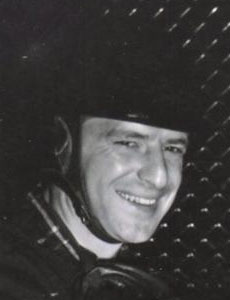
Edited by Rocky2, 01 May 2014 - 13:38.


